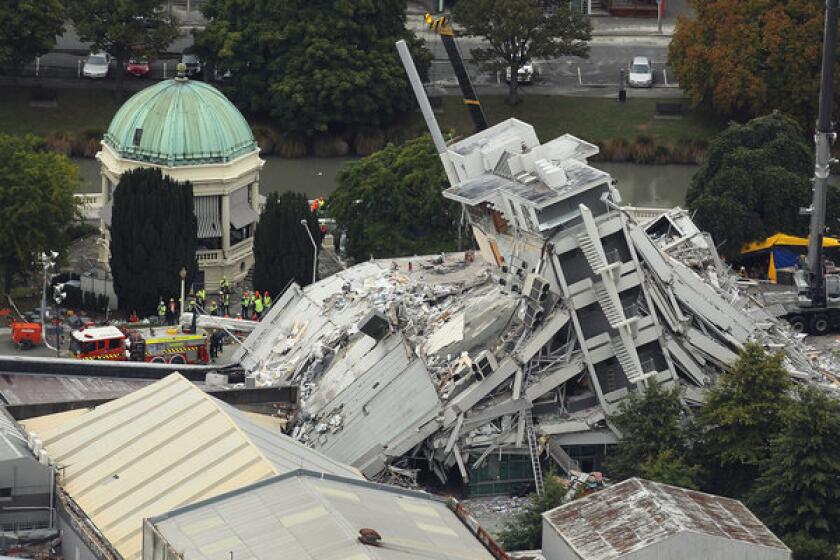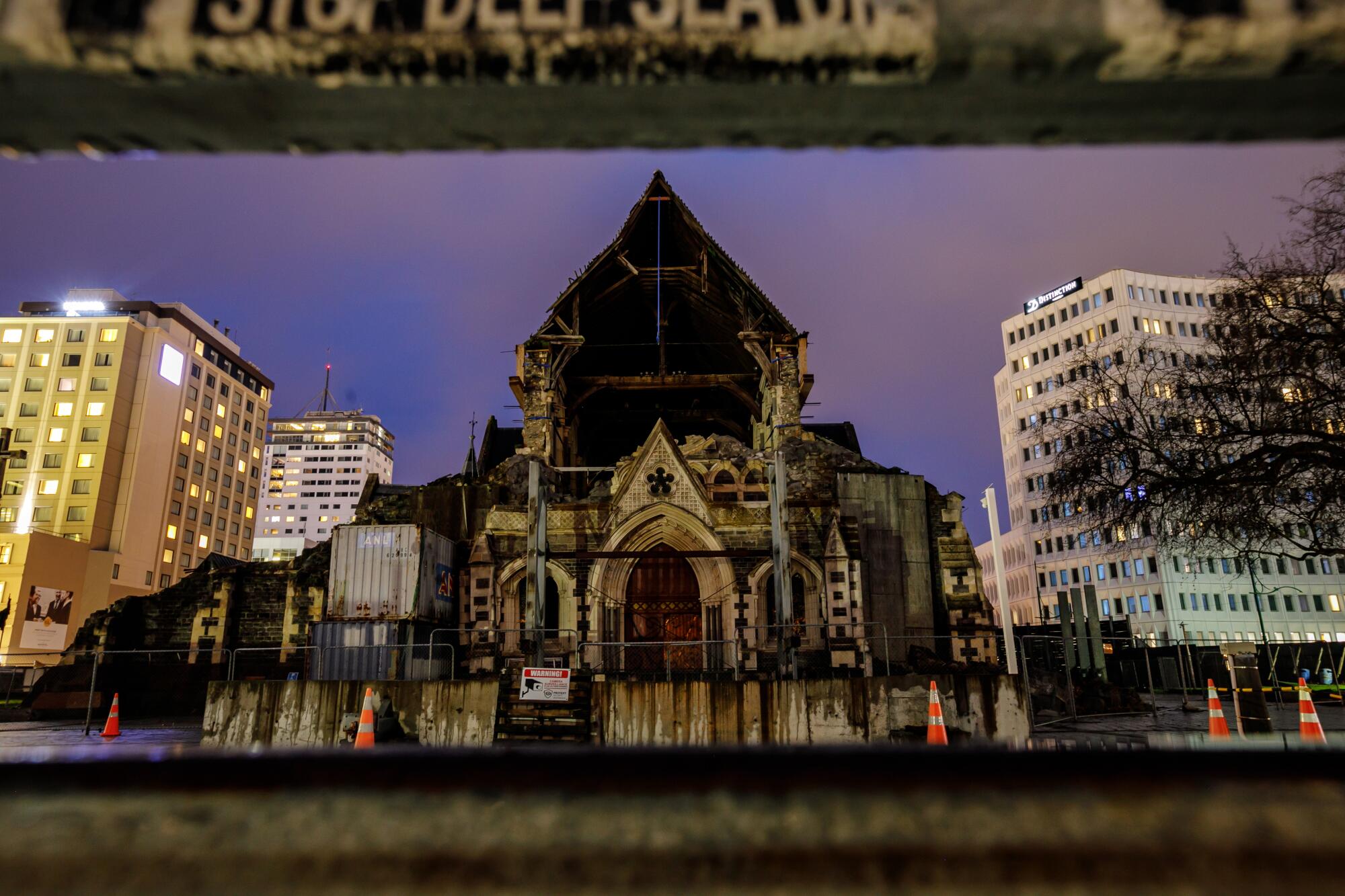
Christchurch, New Zealand, shattered by a 2011 earthquake, offers an urgent lesson for California.
- Share via
CHRISTCHURCH, New Zealand — The high-rise towers that served as landmarks of this city are mostly gone. Blocks where historic brick buildings once stood are now vacant. At the city’s center, Christ Church Cathedral remains in ruins.
The workday bustle in one of New Zealand’s leading commercial centers, abandoned by many employers, has slowed. A once-steady stream of tourists dramatically slimmed.
Eight years ago, a huge earthquake ruptured directly under Christchurch, killing 185 people. Full recovery remains elusive.
The city offers an urgent lesson to California, whose major cities — situated along seismic faults — face similar threats.
A reminder of that came July 5, when the largest earthquake to hit California in two decades shook the Ridgecrest area. Had it been centered under Los Angeles, the destruction would have easily dwarfed what happened in Christchurch.
Since that magnitude 6.2 earthquake hit New Zealand on Feb. 22, 2011, the recovery has been painfully slow. The physical, economic and psychological aftershocks continue.
- The quake redrew the geography of Christchurch. Downtown is now flatter and smaller, with 1,500 buildings in the Central Business District having been demolished. Some businesses left for the suburbs and never came back. Officials also bought and demolished 8,000 houses along rivers, the coast and in the hills and restricted those areas from future development.
- In addition to commerce moving out of the city center, projects intended to restore Christchurch — a convention center, a recreation center, a sports stadium — have not been completed. Some are years away from becoming a reality.
- Earthquake-related psychological distress has been widespread, with post-traumatic stress, anxiety and depression reported years after the shaking.
“We always used to say, ‘Recovery is getting back to normal life.’ The thing is, after an event like this, normal life has changed, and it’s never going to be the same again,” said James Thompson, a regional government emergency management official. “So you recover into a new normal, or a new way of living. And that change will stay with people forever.”
New Zealand and California have similar seismic safety standards, their skylines built in the 19th century with collapse-prone brick and in the 20th century with brittle concrete.
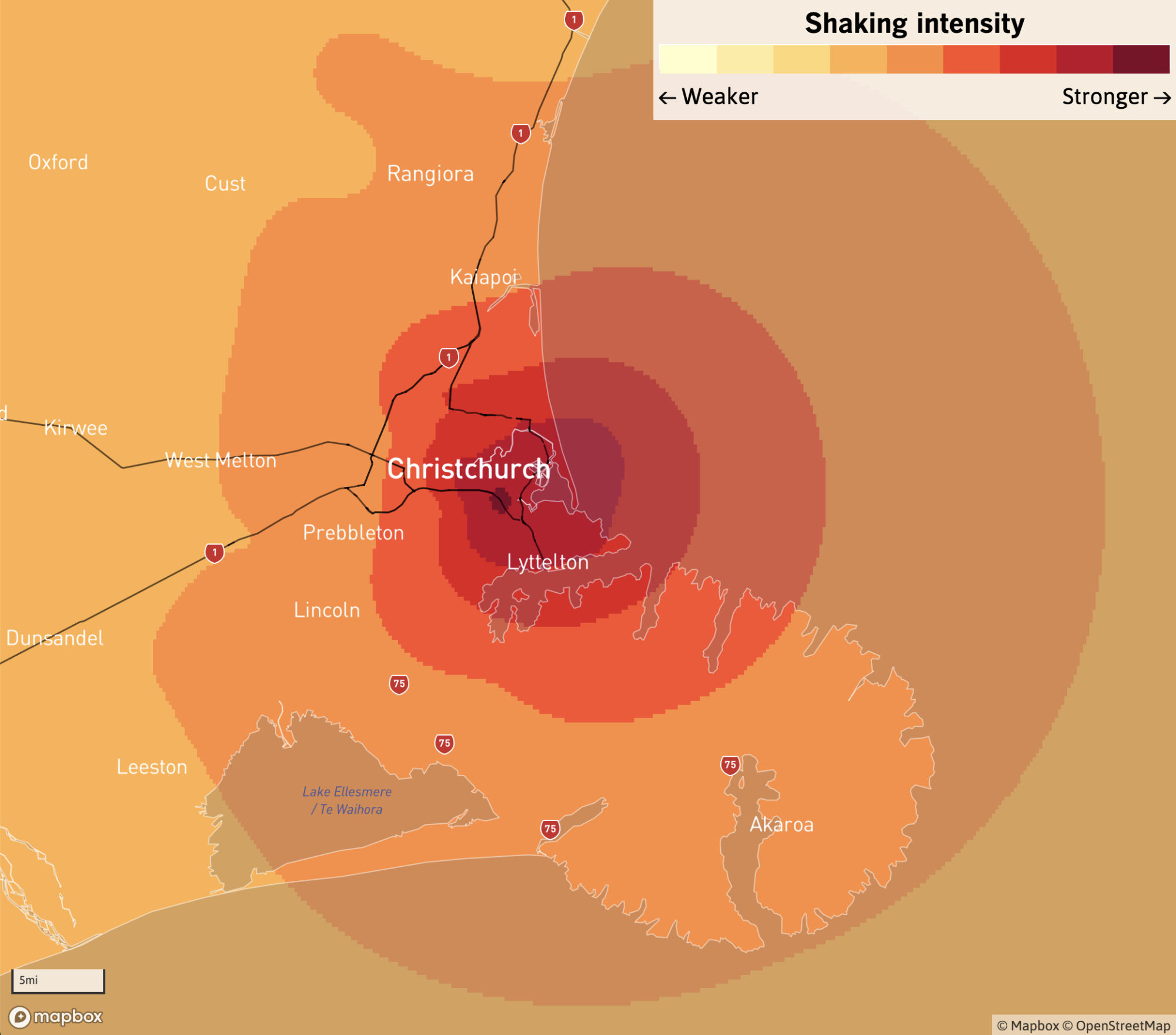
Each also sits on the edge of a huge tectonic plate boundary. Neighborhoods are built on top of soft sediment that magnifies the shaking, and seismic regulations for older buildings in many areas are inadequate to resist collapse from intense shaking.
Recovery from a huge quake in Southern California or the San Francisco Bay Area would be many times more challenging than in Christchurch, given the state’s huge population, housing shortage and sprawling infrastructure. The last brush in California with a truly devastating earthquake was the magnitude 7.8 event in 1906 that destroyed much of San Francisco, setting back the Bay Area for generations.
The state’s more recent quakes, while deadly, were far from worst-case scenarios.
A magnitude 6.9 earthquake in 1989 centered under the Santa Cruz Mountains, 60 miles from San Francisco, collapsed a section of the San Francisco-Oakland Bay Bridge and the double-decker Interstate 880, along with structures in the South of Market and Marina districts; the death toll was 63 and the property damage was $10 billion.
Southern California’s magnitude 6.7 earthquake in 1994 delivered its worst shaking to relatively newer buildings in the San Fernando and Santa Clarita valleys. At least 57 people died and the earthquake caused $20 billion in damage and $49 billion in economic losses.
The U.S. Geological Survey has projected that a magnitude 7 earthquake on the San Francisco Bay Area’s Hayward fault could lead to 800 deaths and 18,000 injuries.
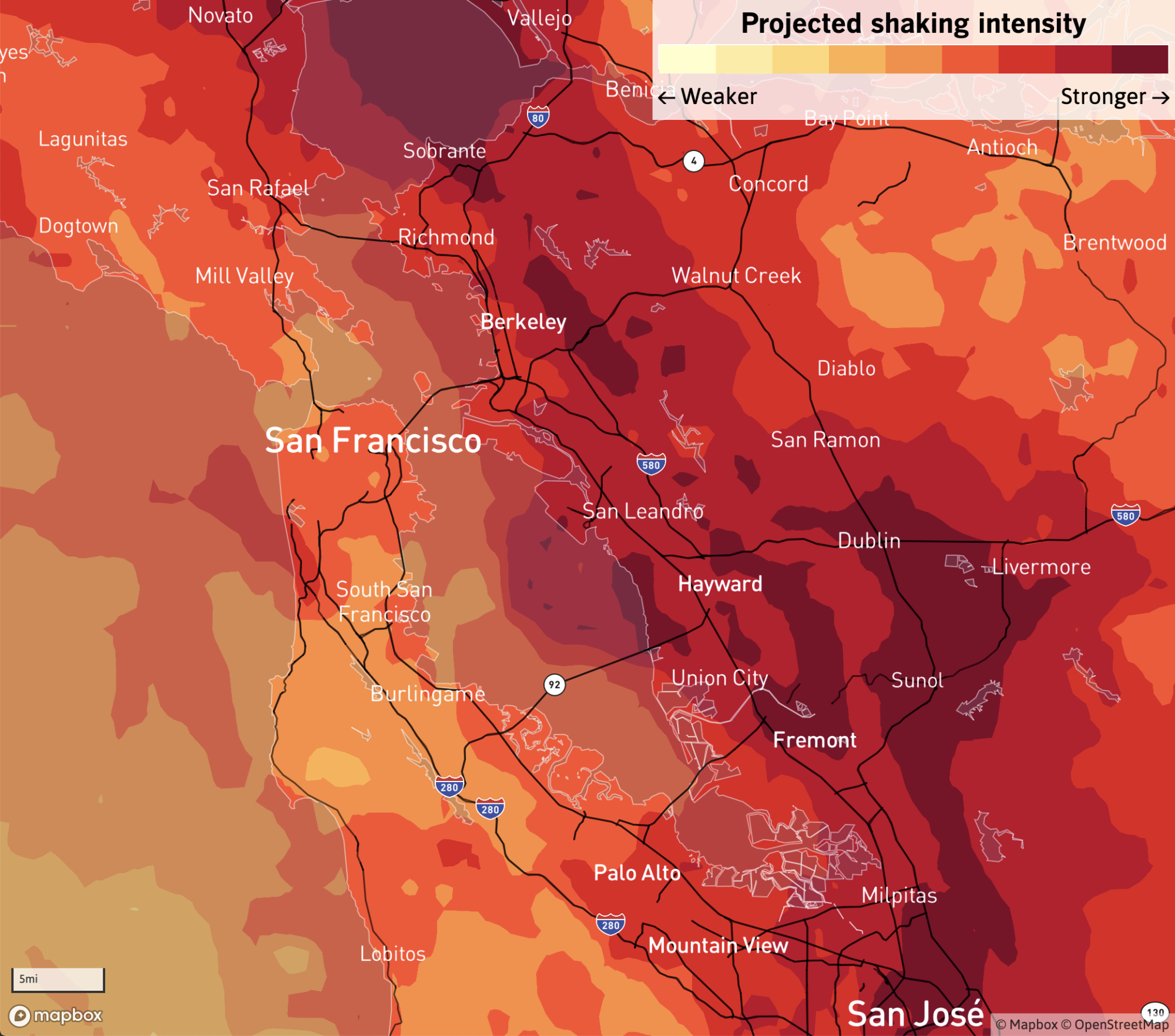
A magnitude 7.8 on the San Andreas fault in Southern California could be even more catastrophic, causing 1,800 deaths and 50,000 injuries.
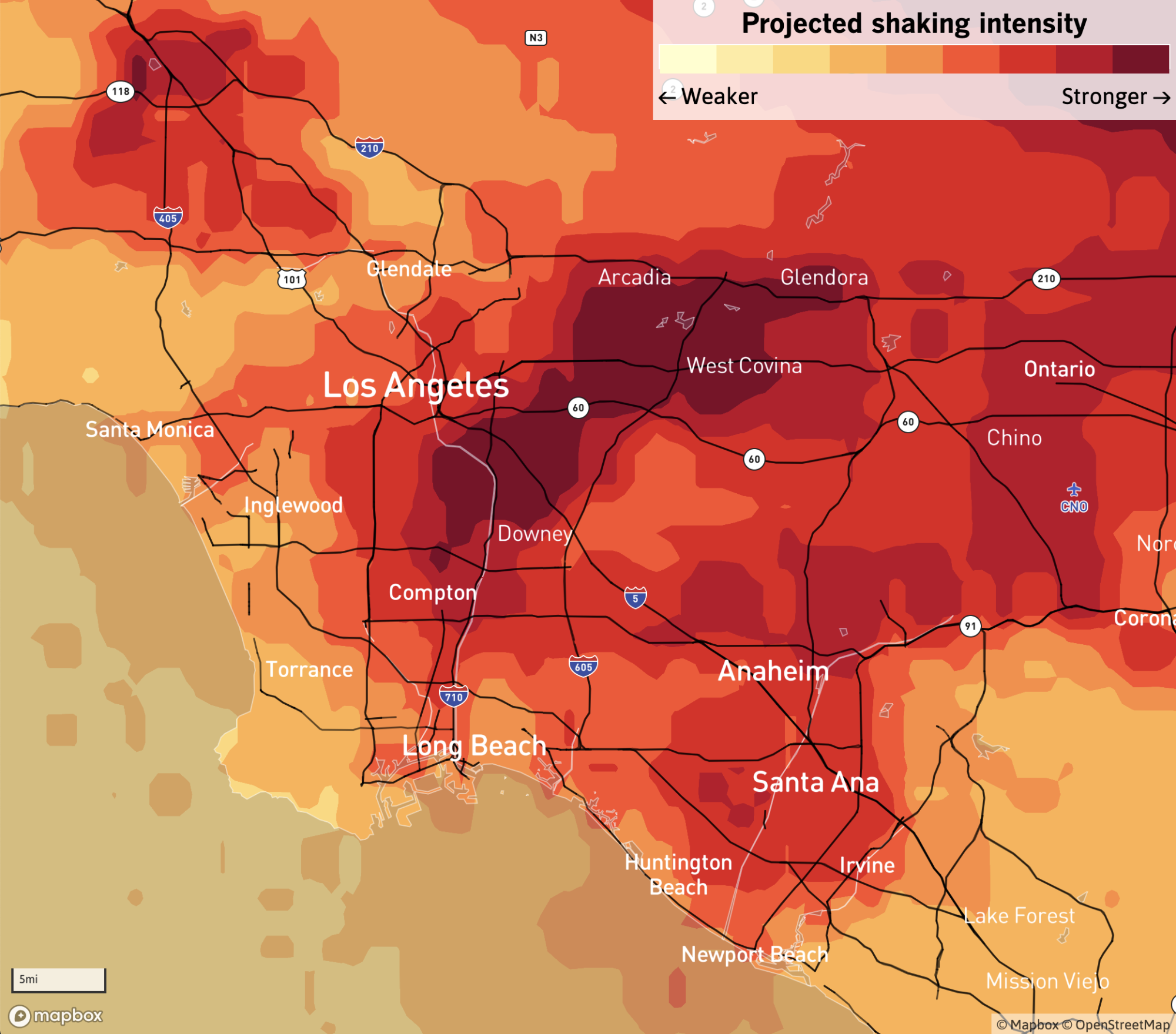
Part 1: A changed geography
Downtown Christchurch before the quake offered an architectural timeline of its history. There were some original ornate buildings from the 19th century, such as the cathedral, as well as commercial blocks built in the early 20th century with brick and stone. The modern skyline began to develop in the late 1960s, with a boom in taller concrete buildings through the 1980s.
Many of those unretrofitted brick and stone buildings could not withstand the shaking. More than 40 people were killed by falling debris. The vast majority had been outside of the collapsing structures, including pedestrians and those riding by in vehicles.
The quake also ravaged the downtown’s concrete office buildings. Two collapsed — the six-story Canterbury Television building, killing 115 people; and the five-story Pyne Gould Corp. building, causing 18 deaths.
Christchurch’s closest port, Lyttelton — New Zealand’s third-largest — suffered massive devastation, incurring more than $320 million in damage so extensive that the rebuilding process was expected to take at least 12 to 15 years. A big blow to Christchurch was that Lyttelton’s damaged wharves no longer allowed large cruise ships to dock.
So many buildings came tumbling down that Christchurch’s city center was cordoned off to the public, some areas for more than two years.
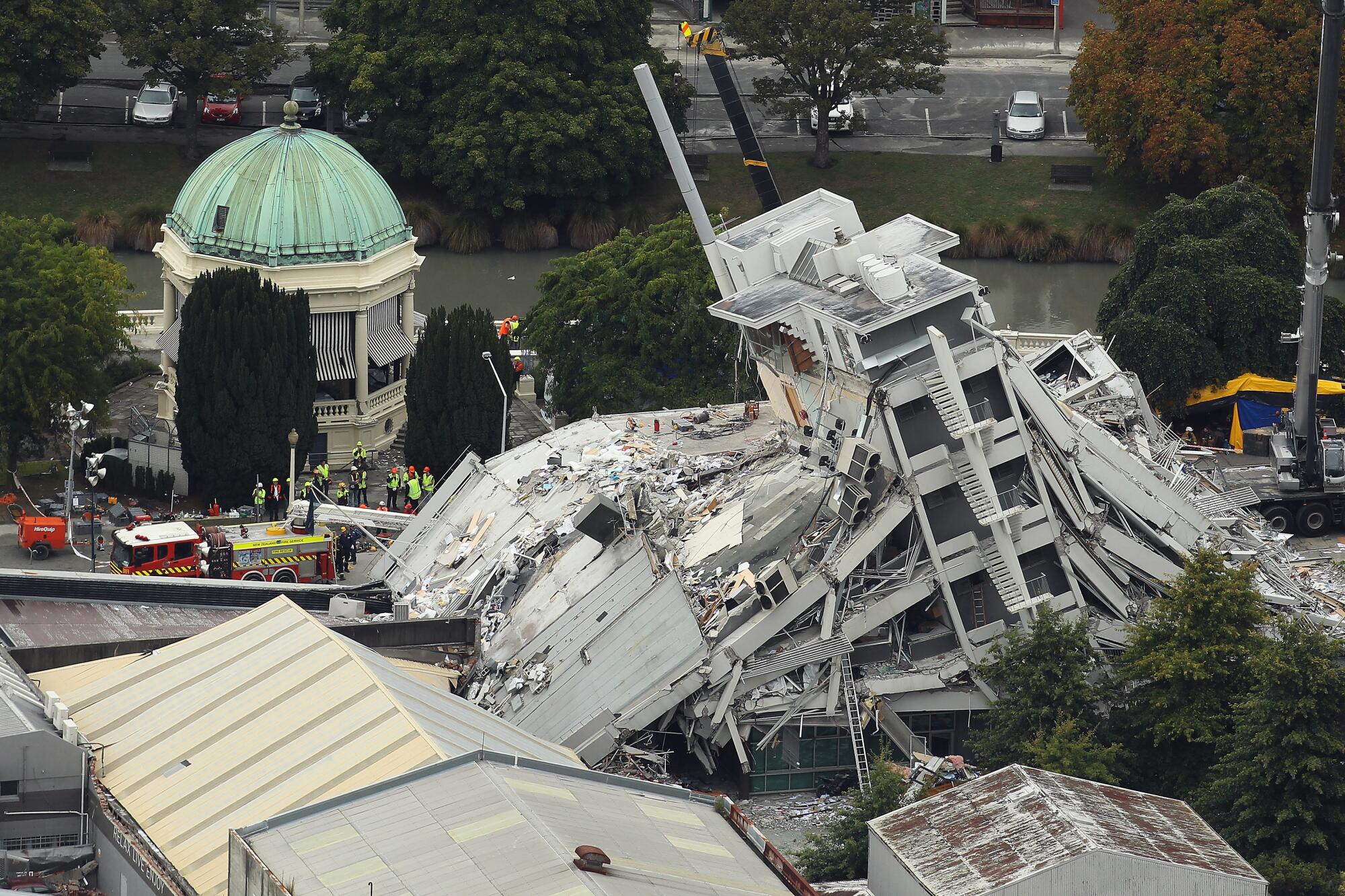
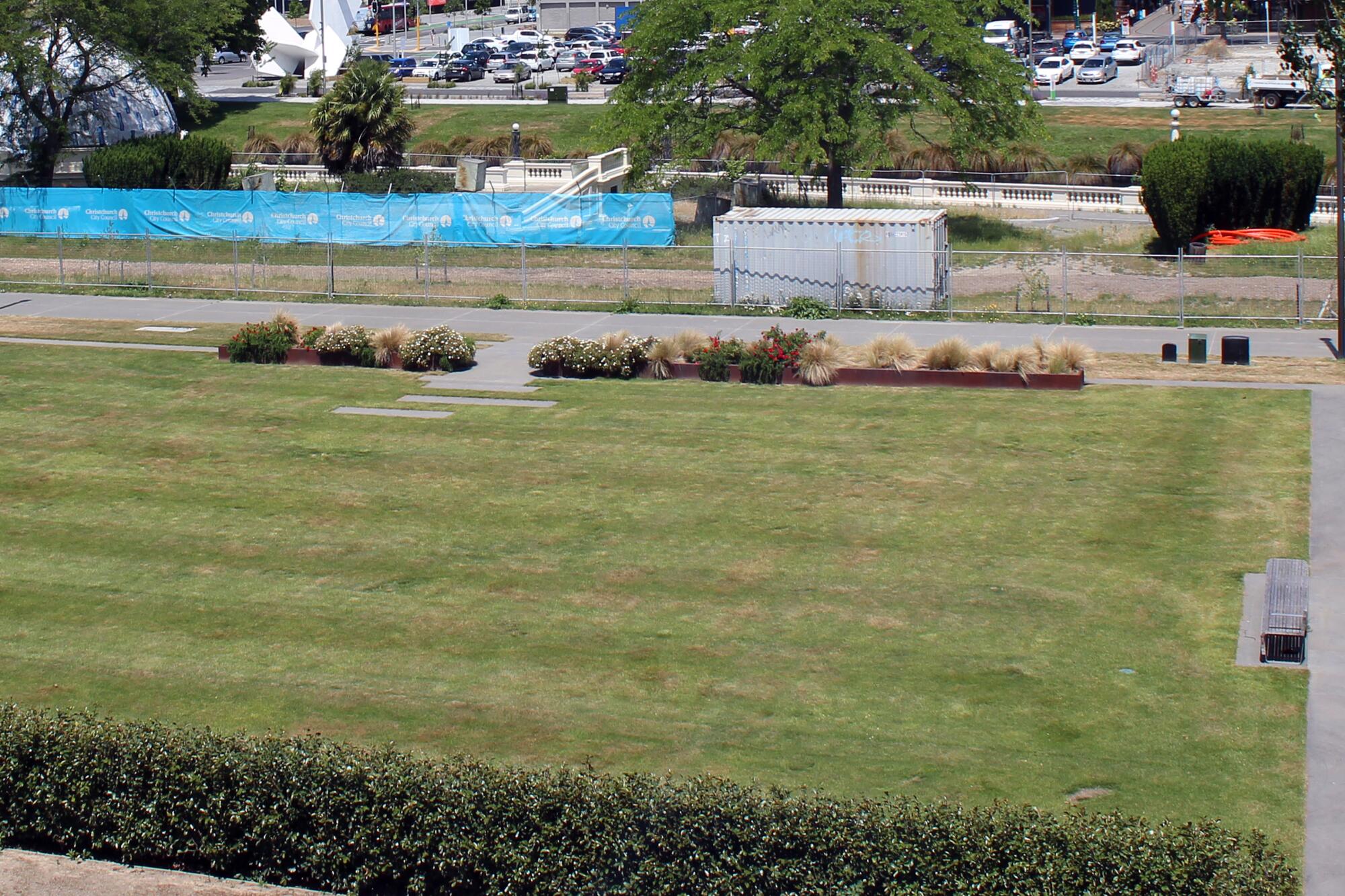
But even as the newly compact downtown gradually reopened, the rebuilding was slow, with many people staying away “just because there were so many aftershocks,” said resident Penny Smart.
Her shop, Mrs Higgins Oven Fresh Cookies, was demolished along with the rest of the historic Regent on Worcester Theatre building, built in 1930. She reopened elsewhere two years later, but the dramatic decline in foot traffic has meant that she’s doing about 60% of pre-quake business.
“It’s still a struggle: Literally, we’re making enough to stay open, and that’s about it,” Smart said.
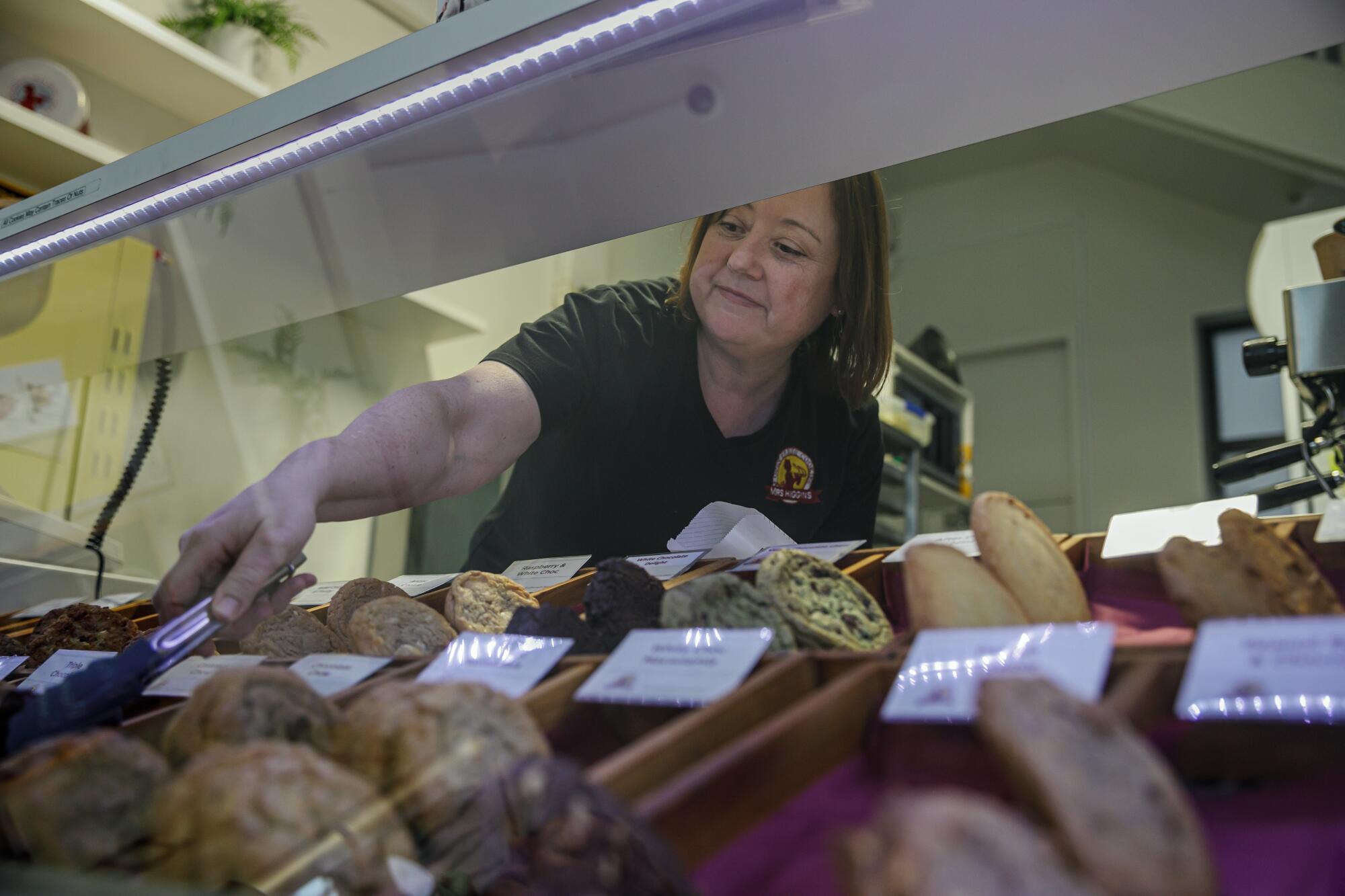
One hairdresser who reopened downtown quickly found that some customers were unsettled that the salon floor was leaning at an angle.
“The chairs would roll,” said Tracy Hatton, who has a doctorate in disaster recovery and spoke with the hairdresser. “They called us the doughnut, because you had a completely dead [downtown] and you had all this activity ... out where there was space” in the suburbs.
As in California, development in Christchurch decades ago occurred along prized coastal land — with little thought about the stability of the ground below.
Southshore was always one of the city’s most picturesque neighborhoods, a thin peninsula of modest homes sandwiched between a sandy beach and the Pacific Ocean on one side and an estuary on the other.
‘After the earthquake, we all sort of thought — oh, five years and the central city will be back to normal. And it was oh, probably 10. And then 15. And then 20. And so it goes on.’
— — Karen Selway
The earthquake caused land there to act like quicksand, a process called liquefaction. In one spot, a gusher of water 4 feet high flowed from what had been a garden. Some home foundations were completely destroyed; land dropped a foot in elevation in places.
Unlike downtown, some parts of this neighborhood and many others across the city could not be rebuilt. They were just too badly liquefied, had sunk too much, or were now at too high a risk of landslides and cliff collapse for there to be hope of developing without a prolonged, costly effort to stabilize the land.
The government made offers to buy more than 8,000 homes and demolished them, limiting redevelopment on three square miles of land.
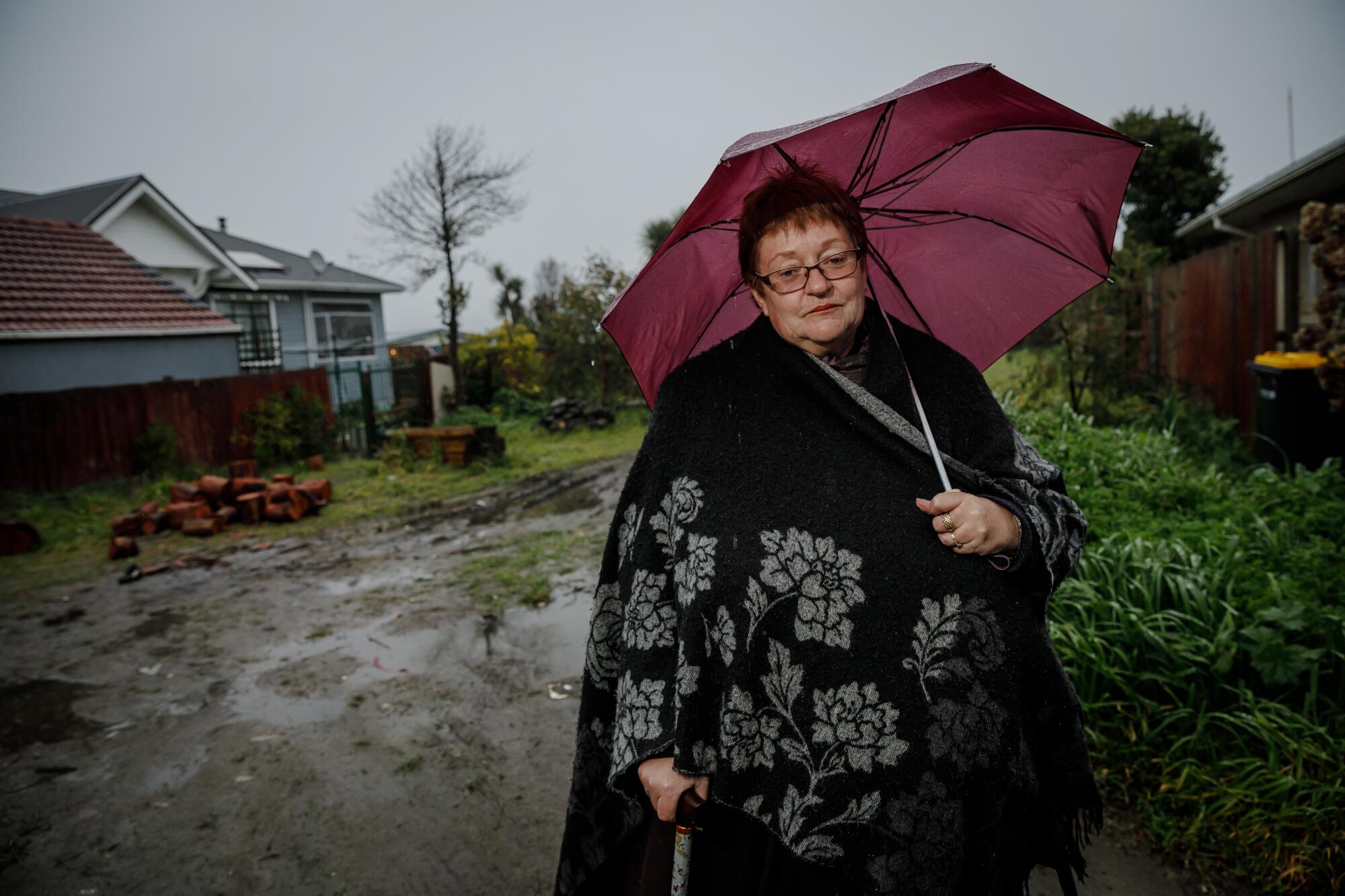
Lynda Burdekin, 68, had to say goodbye to one-third of her neighbors. About 170 homes, all closest to the estuary, were bulldozed.
Some of them went off to homes for seniors; others moved to where their families lived. The farewells were emotional. “They intended to stay their life out there,” she said.
Burdekin’s home was so damaged that it would need to be rebuilt with a stronger foundation, and situated higher to guard against rising sea levels.
With the quake having destroyed a wall separating homes from the estuary, Southshore is more at the mercy of the forces of nature than ever. City Hall has agreed to study how to protect the neighborhood from erosion and flooding for as long as possible.
Ann Brower, an environmental scientist, had long worried about the historic brick buildings that lined the streets of downtown Christchurch. She had personal experience: She lived through the Northridge earthquake of 1994 while she earned her undergraduate degree at Pomona College.
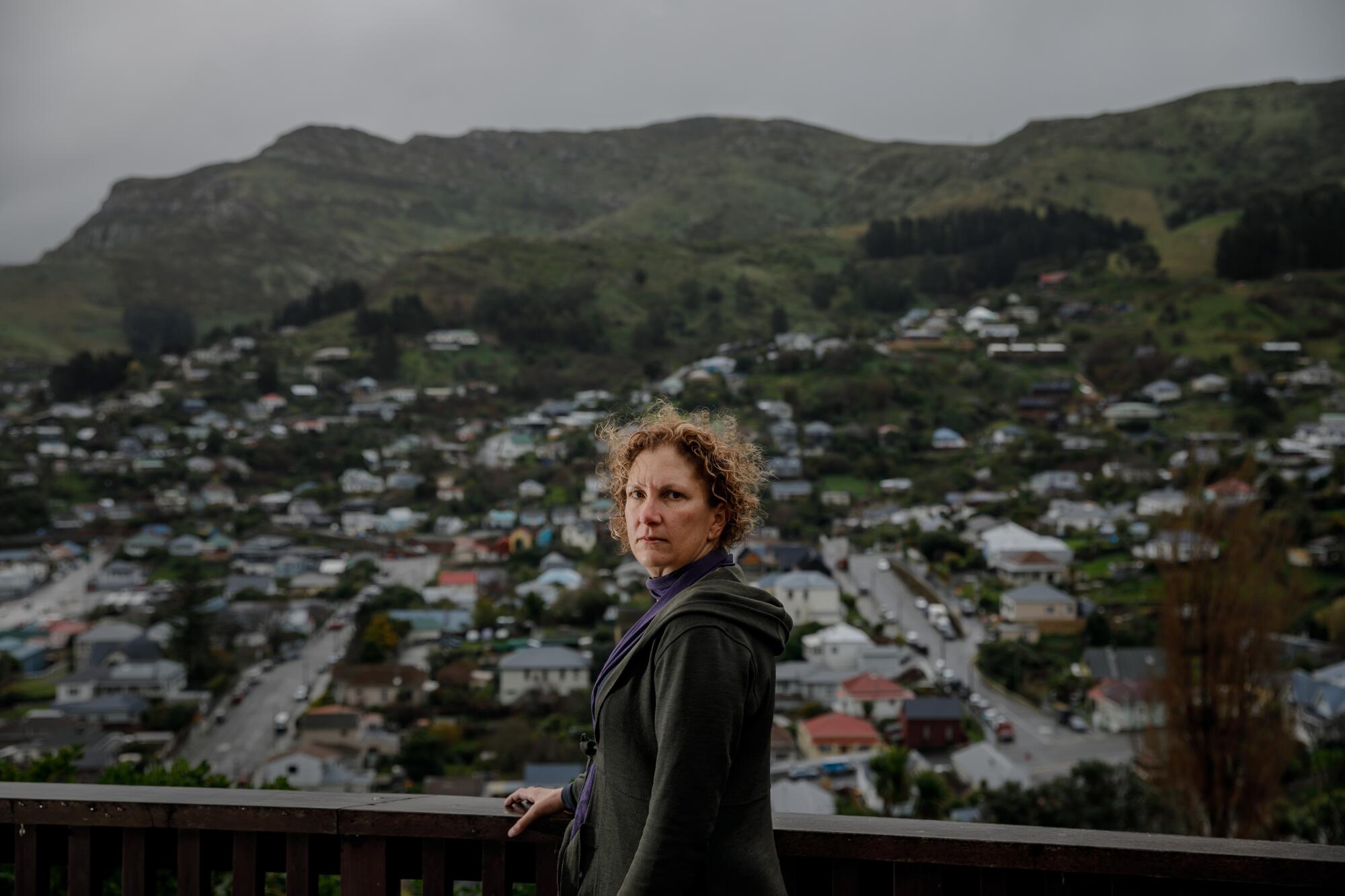
For this reason, Brower had avoided going to downtown Christchurch after the city began having damaging earthquakes in the latter half of 2010. But on Feb. 22, 2011, she shrugged off the worry and planned a bus route into downtown. As her bus cruised through the city center, the great quake struck.
Huge chunks of unretrofitted brick buildings fell onto her bus, crushing it. All eight others on the bus, including the driver, were killed. The youngest was a 14-year-old boy heading home while enjoying a half-day off from school. Four pedestrians also died.
Brower’s worries about downtown Christchurch’s vulnerabilities were well-founded and helped explain how the city has changed in the last eight years.
Brower said she likes the new downtown, which is safer and less dense. She now goes to the new restaurants that are opening and is glad all those brick buildings are gone. The city recently opened a new sprawling government justice center as well as a library, renovated concert hall and indoor farmers market. Civic boosters hope the convention center’s opening and the return of large cruise ships to the city’s closest port next year and planned new hotels will entice visitors to stay longer; work on strengthening the Christ Church Cathedral is expected to begin next year.
“Life was never meant to stay the same,” Brower said. “Recovery — that’s where you’re going back to where you were. You never fully recover from an earthquake. But that’s not necessarily a bad thing.”
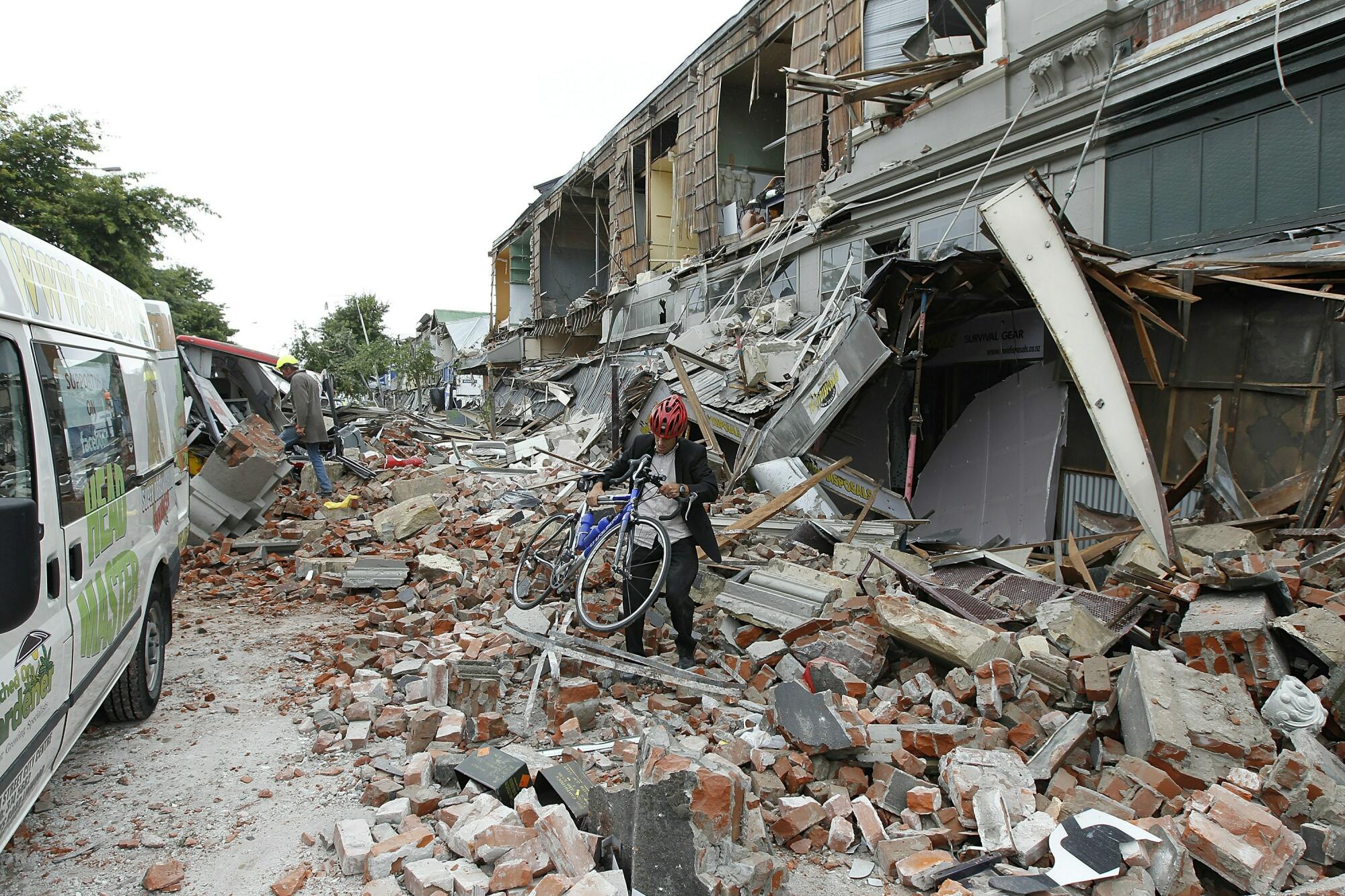
Part 2: Economic wounds
Karen Selway prided herself on planning for the future.
She started a market research company in Christchurch that at its peak employed the equivalent of 17 full-time employees. She bought a brick building downtown to house her offices, using the extra space to bring in tenants.
To her, the building was a nest egg.
When the quake hit, its walls suffered significant cracks. No one was hurt, but officials quickly ordered the remains demolished.
There was little time for Selway to retrieve her files or computer servers; she was busy preparing for the funeral of her sister, a clinical psychologist who died when the Canterbury Television building collapsed and caught fire.
“You grieve the loss of your building as well,” Selway said.
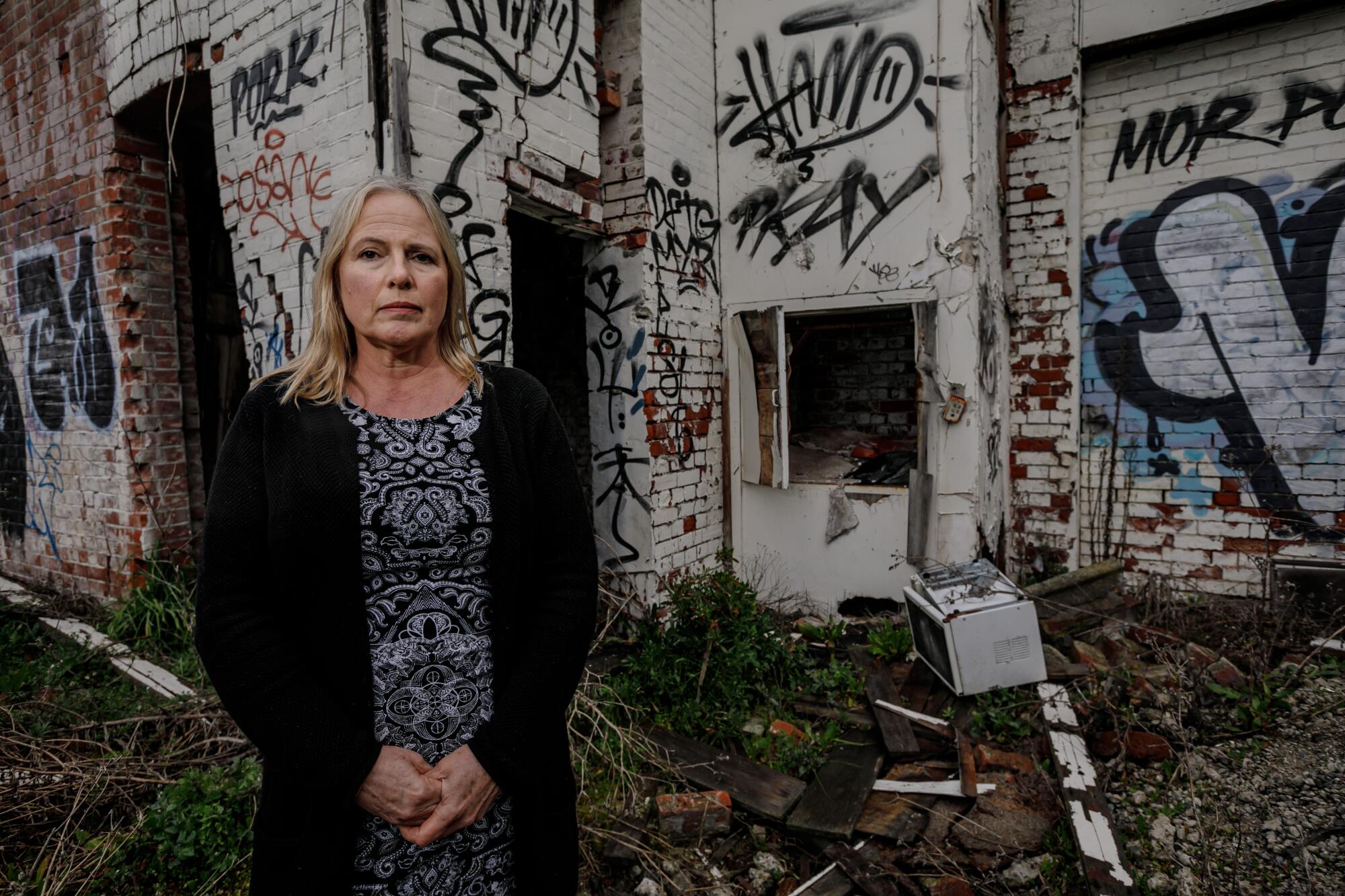
The Christchurch rebuild is expected to cost $26 billion, according to an estimate by the Reserve Bank, making it New Zealand’s single biggest economic challenge.
“After the earthquake, we all sort of thought — oh, five years and the central city will be back to normal. And it was oh, probably 10. And then 15. And then 20. And so it goes on,” Selway said.
The economic blow for many was lessened by New Zealand’s high rate of earthquake insurance.
Unlike in California, where most homeowners are required by their lenders only to have fire insurance, there’s a compulsory earthquake insurance add-on in New Zealand for anyone with the standard residential fire policy, according to Ilan Noy, professor of economics at Victoria University in Wellington. More than 95% of residential properties are covered.
The insured value of Selway’s property was $830,000, but it would have cost $2 million to rebuild.
“I’ve just been to places, in terms of stress and stress levels mentally, that you just never would’ve imagined existed,” Selway said. “If we had known eight years ago what we were going to go through, I would’ve said I couldn’t do it.”
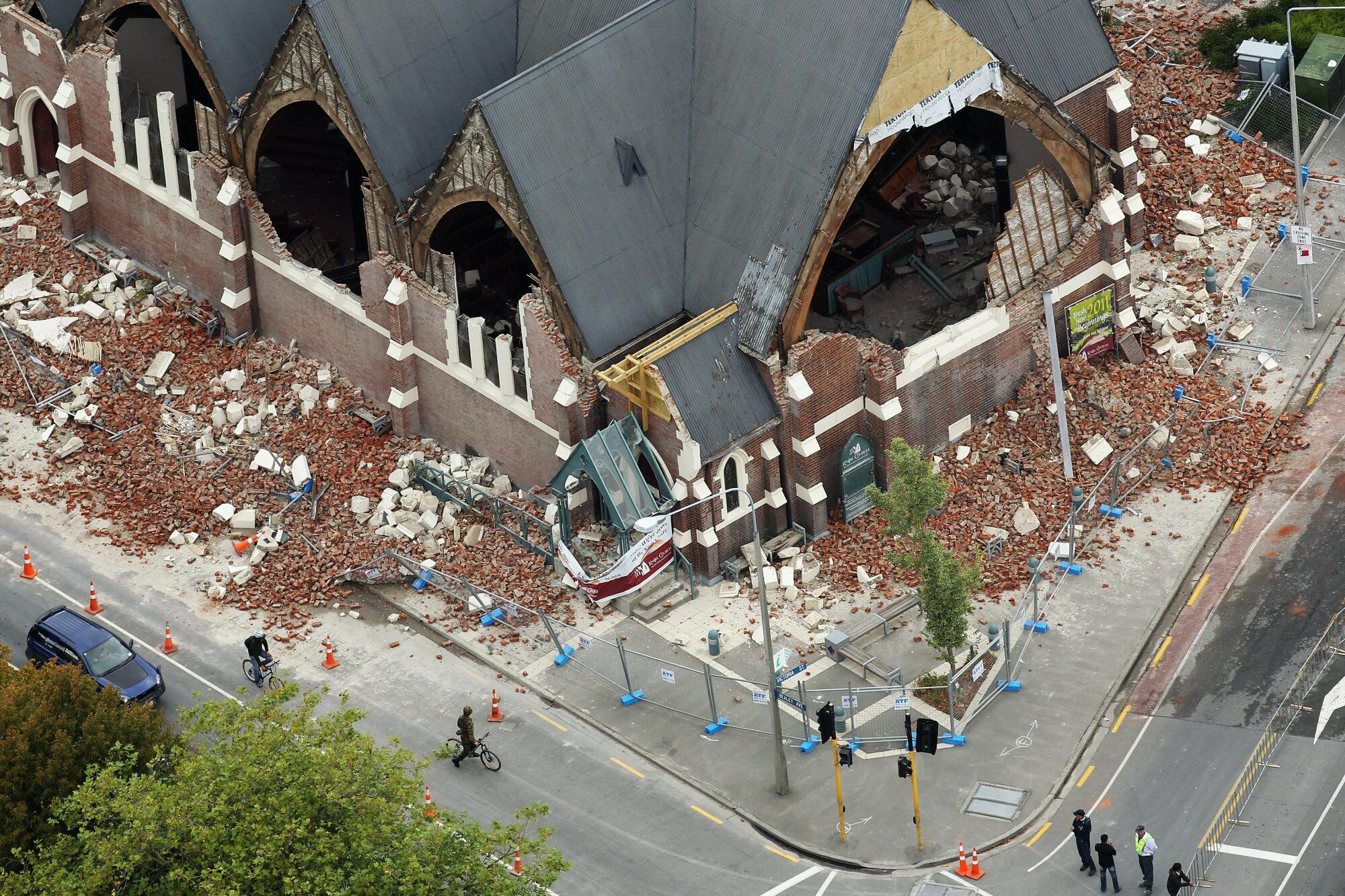
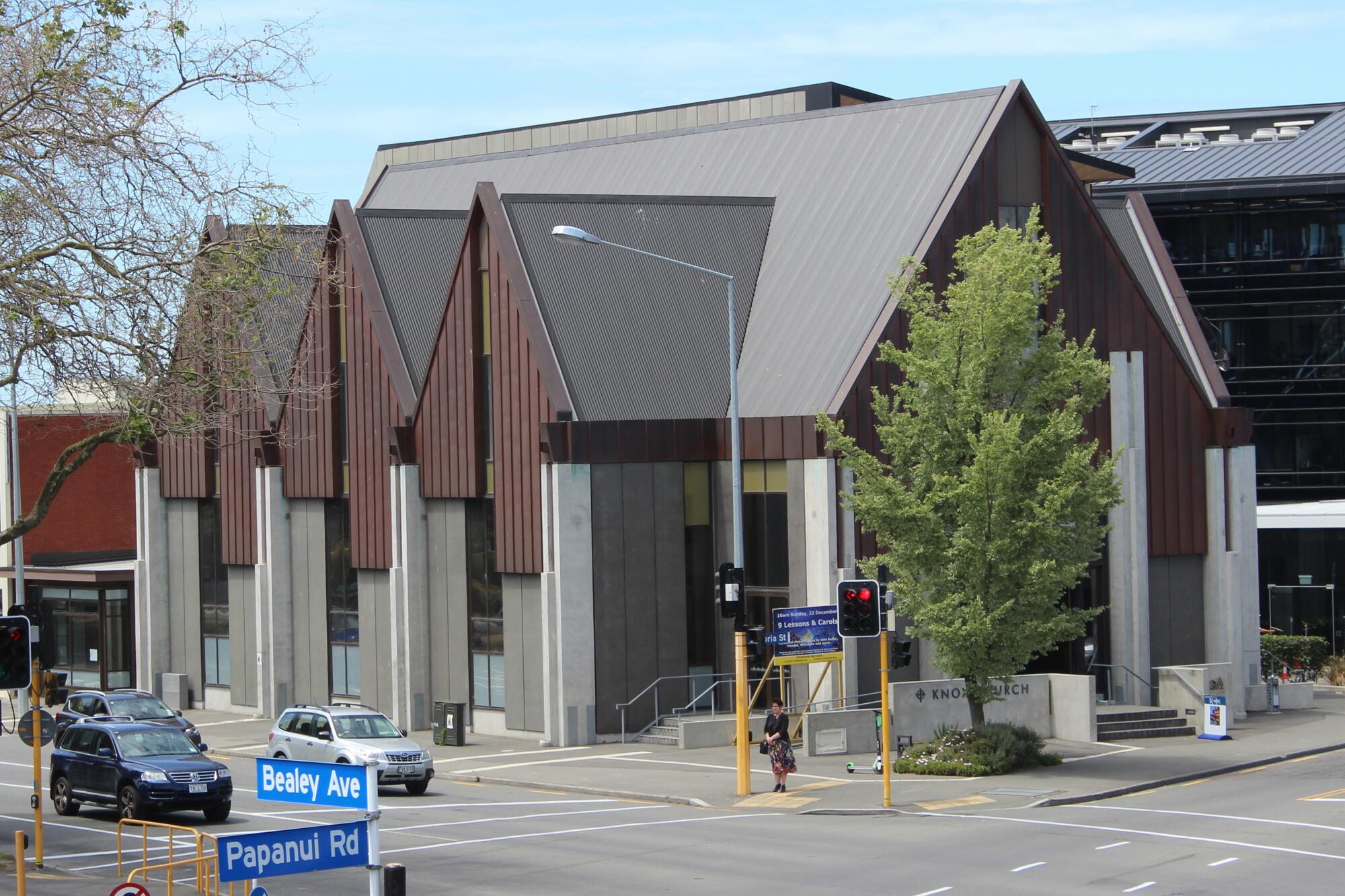
The last few years have been economically challenging as demand for market research in a quake-ravaged city evaporated. Selway now has the equivalent of three full-time employees.
She still owns the land under her demolished building, and the city is interested in buying it to build the stadium. But the government has valued the land at a significantly lower price than what Selway’s experts have found.
Selway feels she’s lost nearly a decade of her life fighting with insurers and the government, and estimates her quake losses at about $660,000.
Selway purchased a single-family home far from the city center as her new office. But emergency government rules allowing homes to be used as offices will expire in 2021, and the building’s use will revert to that of a residential home.
She’s bought a house next door and is converting it into a well-being center — as a tribute to her late sister, Susan.
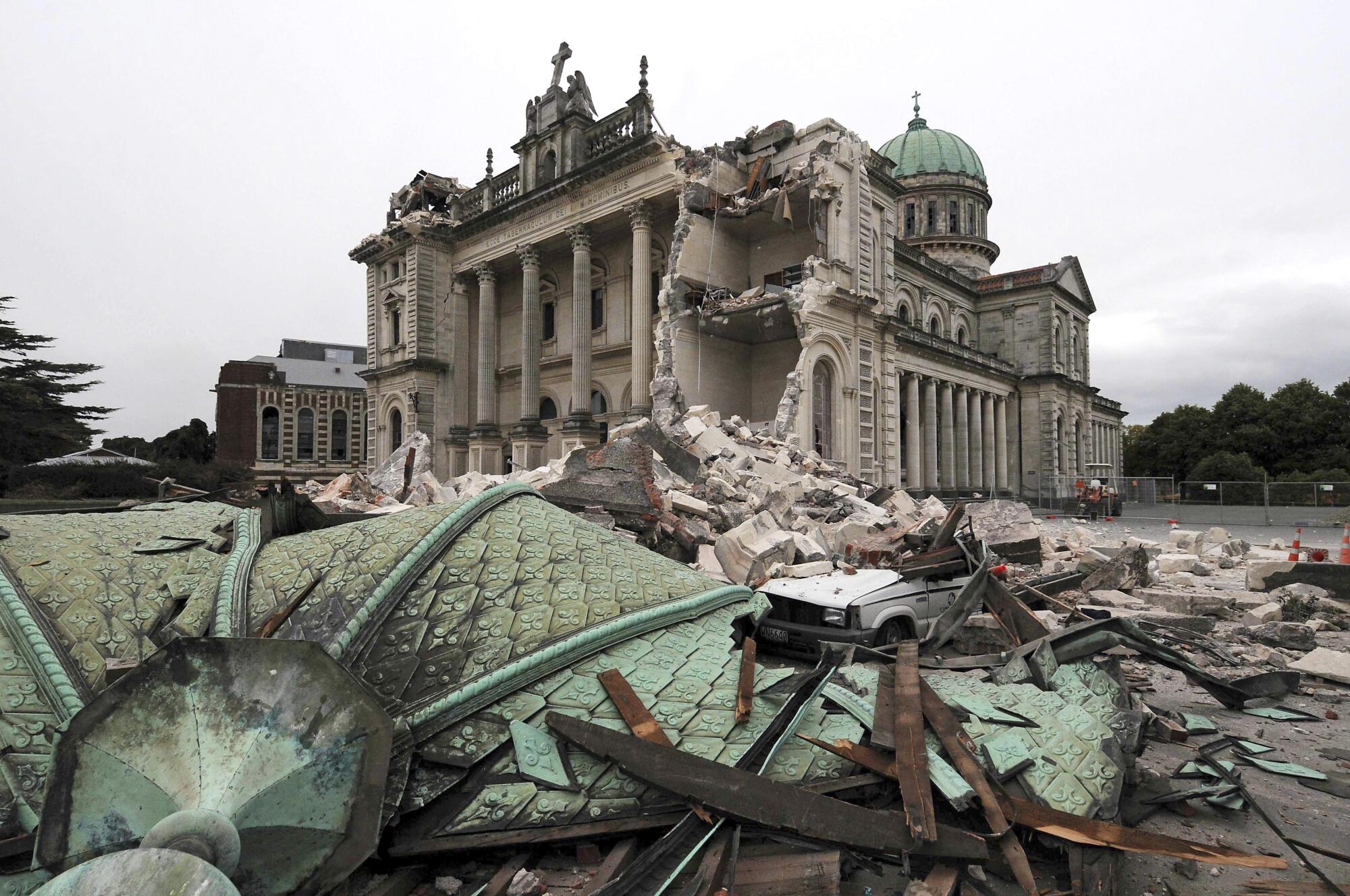
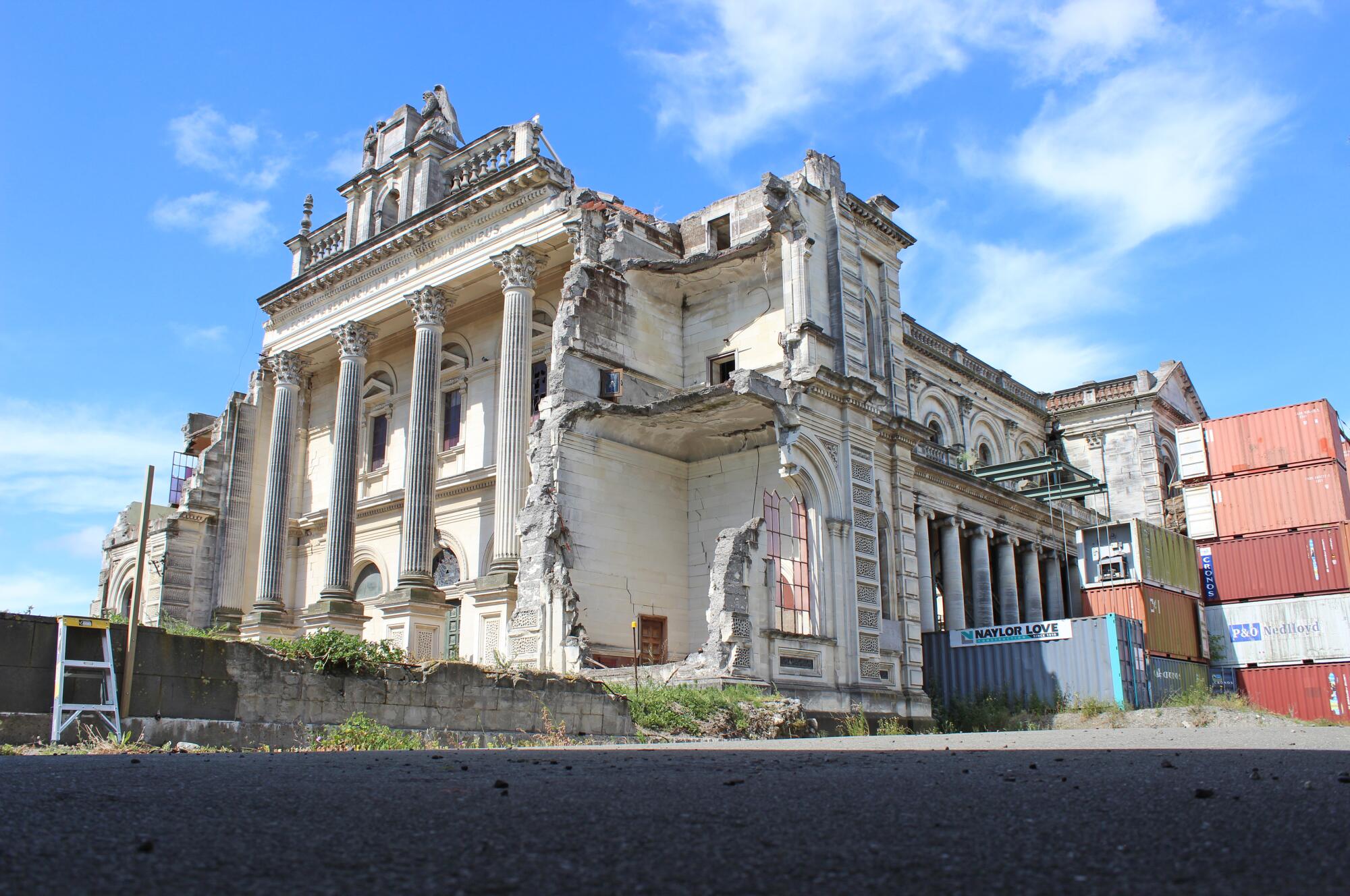
Part 3: A mental earthquake
When the shaking started, Amy Cooney told her brother, Jaime Gilbert, to run.
They were working at a bar inside an old stone building. First the bottles crashed around them. As they emerged onto the sidewalk, giant blocks of limestone were crashing down.
Cooney, then 31, woke up to the taste of dust in her mouth, trapped.
She felt her hand touching her brother’s. Gilbert had been killed instantly.
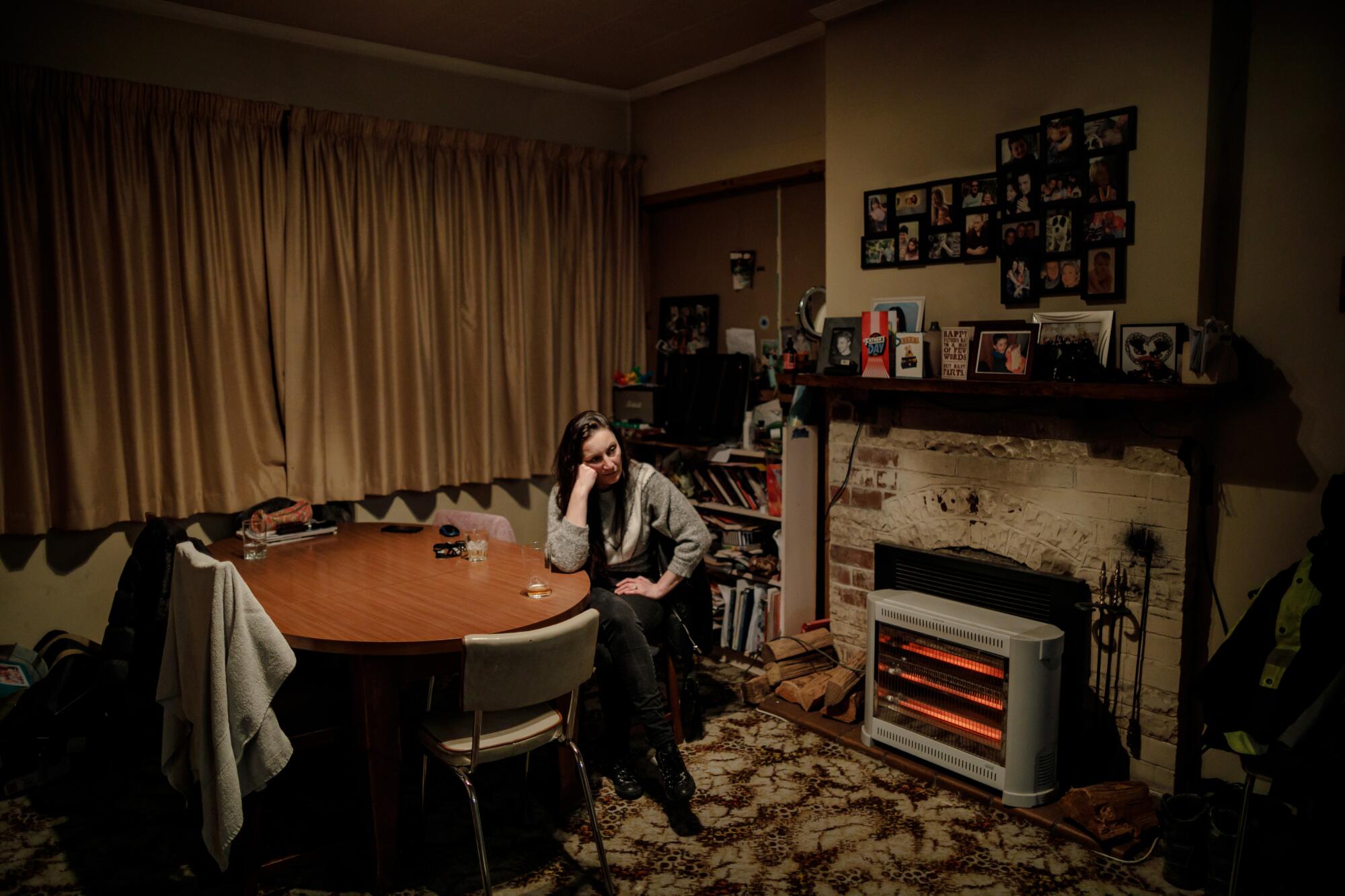
Cooney had always considered herself a strong person, a rock to the people in her life. Not only was she a mother to three children, she had long been a mother figure to her 22-year-old brother: She bought him his first car, gave him his first job, bought him his first cellphone, and was there for the birth of his first child.
In the months after his death, she thought she was fine. To others, she seemed edgy and angry. She’d have nightmares about her family trapped in rubble; in the day, she’d endure panic attacks and painful flashbacks. She drank to dilute her feeling of powerlessness.
Her physical injuries — nerve damage to an arm, fractured cheekbones, head lacerations — healed. But “the emotional injuries were far greater than I could’ve even conceived,” she said.
Addressing the mental and emotional toll of a devastating earthquake has proven difficult and elusive for Christchurch.
Rates of depression and anxiety disorders went up among those who’d been closer to the shaking. So did the total number of mental disorders. A health survey between 2014 and 2017 found that 23% of the Canterbury region suffered from a mood or anxiety disorder, higher than the national rate of 19%. Experts said the emotional scars ranged from loss of sleep and mild forms of anxiety to acute psychiatric problems.
“Our mental health services came under an enormous amount of pressure in the immediate aftermath,” said Dr. Alastair Humphrey, medical officer of health for the Canterbury region.
Some patients with histories of mental health problems relapsed into depression or even psychosis, needing hospital treatment. New patients came seeking treatment for lost sleep and general anxiety. The regional health board has said the long-term effects for children were “particularly worrying.”
Experts say that immediately after an earthquake, after a community celebrates rescues and heroes, the public can enter a phase of unrealistic hope in which everyone thinks everything can return to normal quickly.
Then there’s a long phase downward, accompanied by stress, exhaustion and fatigue.
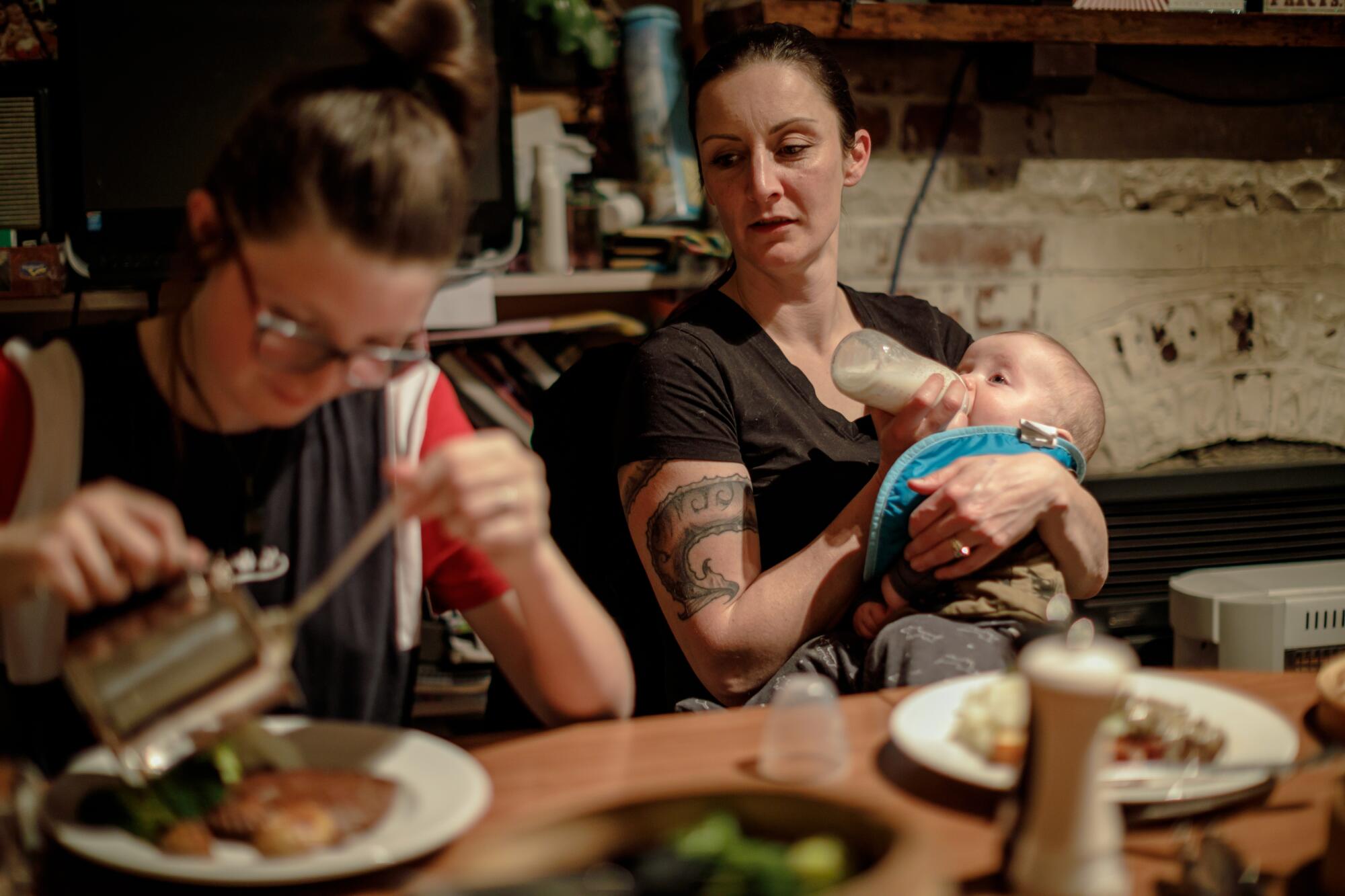
For Cooney, it took time to understand how badly the earthquake had shattered her psyche.
The sight of rubble or the smell of dust sometimes triggered anxiety.
Six months after the quake, her husband — normally content to allow Cooney to be herself — spoke up. And that led her to a doctor and a diagnosis of PTSD.
In 2½ years of treatment led by a team of physiotherapists, Cooney said, one of the hardest parts was overcoming her own prejudices against the idea of having a mental health problem.
“I didn’t want it to go on my [work history], when you fill out the form, ‘Have you ever been injured in a way that you may not be able to fulfill your duties?’ I didn’t want to say yes.”
She has a fourth child now. She has a new managerial job.
And nowadays, even when simple things go wrong, she’s not bothered by it. “I’m like, man, I had a whole building fall down on me. I’m all right,” she said. “I’m being cheeky, but it’s kind of true.”
One of the toughest decisions survivors faced in the months after the earthquake was whether to stay.
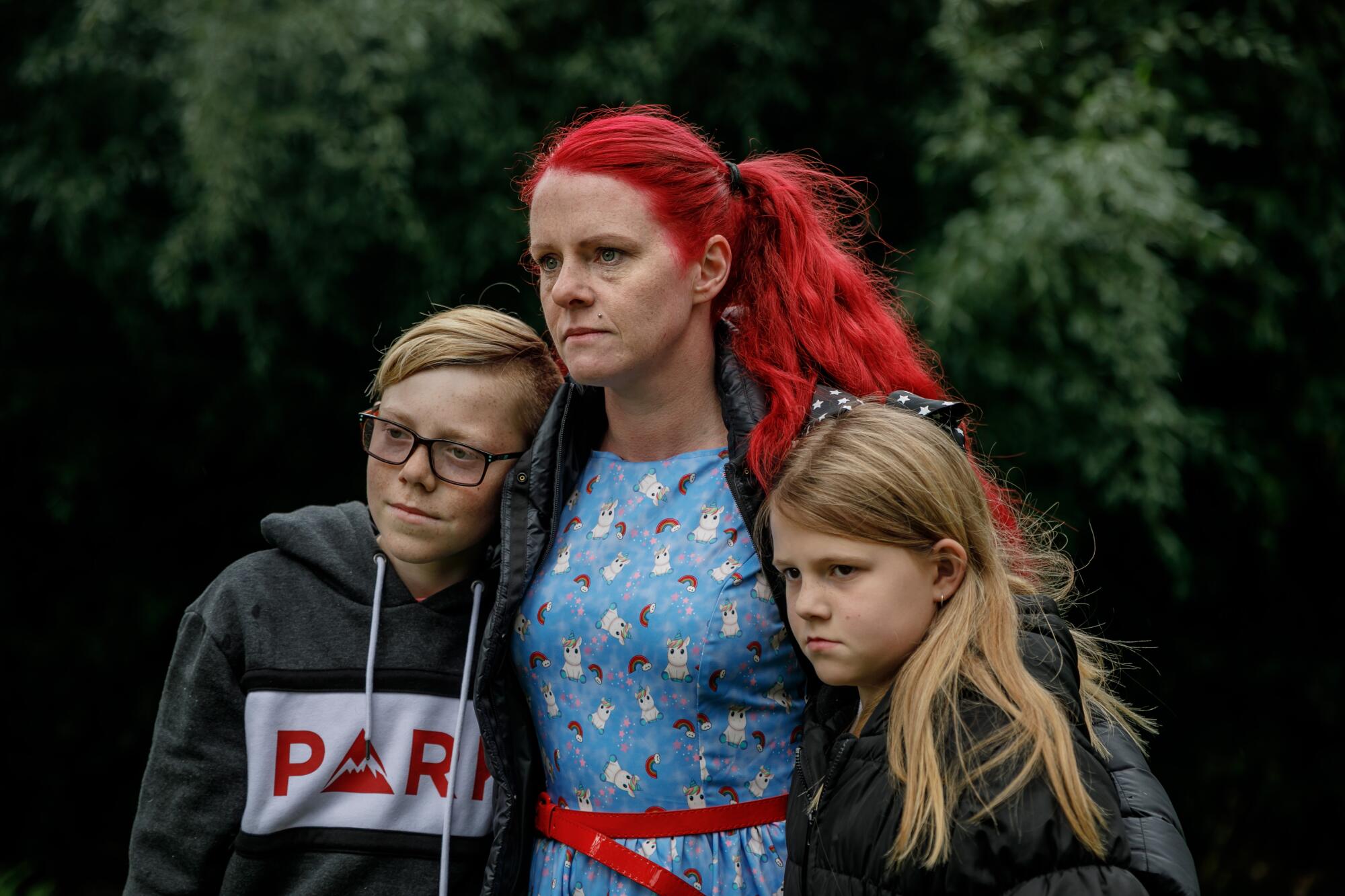
Kendyll Mitchell was one who left.
Just moments before the deadly earthquake hit, Mitchell, then 27, had taken her 3-year-old son, Jett, and 10-month-old daughter, Dita, to the top floor of a six-story concrete office building in Christchurch. She was there for a counseling session for Jett, who had become terrified at the constant earthquakes that occurred in the months before the big one. He wasn’t sleeping; he couldn’t go to preschool; he didn’t want to leave his mother.
As they sat in the waiting room, it began to shake. Mitchell grabbed Jett with her left arm and Dita’s stroller with her right hand.
The floors and walls started to move apart from each other. The floor started to fall, and she remembered feeling sucked downward.
Oh, my God, we’re all going to die, she thought, before she blacked out.
The Canterbury Television building, which housed a counseling agency, a TV station, a clinic and a language school, collapsed within 10 to 20 seconds, according to a government report. All the floors dropped, virtually straight down, pancaking.
When she woke up 10 minutes later, Mitchell was lying on her right side, trapped in a crawl space about 3 feet high. Miraculously, her children seemed fine: Dita was still in her stroller — a piece of concrete had grazed her temple and a pane of glass the size of notebook paper rested flat on her chest. But she wasn’t crying; Jett had comforted her.
Mitchell could see daylight. Then she saw smoke coming from the stairwell.
OK, we’ve survived the fall and now we’re going to perish in a fire.
Within minutes, a construction worker who had climbed onto the rubble to search for survivors found Mitchell and pulled her and her children out.
Mitchell suffered a fractured pelvis, a broken tailbone, a gash on her leg and a head injury.
The family left Christchurch for a town 100 miles to the southwest, Timaru, where they had relatives.
They decided to make the move permanent.
The recovery wasn’t easy. Mitchell said she had to deal with her newfound anxiety; she was fearful of leaving her children when she dropped them off at day care; she was fearful of her partner going back to work. She trained herself to not allow worry to become debilitating.
A turning point for Mitchell came when a friend told her that she could think of the building collapse in two ways: “This can be what has happened to you. Or it could be the rest of your life.”
In other words: “You can choose to move on, or you can choose to continue down this road.” At that point, she decided: “I’m not going to let this control the rest of my life.”
Christchurch, Nueva Zelanda, destrozada por un terremoto en 2011, ofrece una lección urgente para California
More to Read
Sign up for Essential California
The most important California stories and recommendations in your inbox every morning.
You may occasionally receive promotional content from the Los Angeles Times.






